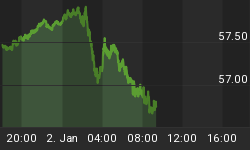Last week, gold lost 15% from its recent peak. The mild inflationary picture and a tepid global economic recovery should contract US stock trends and support the US dollar for a few more months.
US economy: Consolidation or slowdown?
In the US, retail sales declined slightly in March (-0.4% month-on-month) due to falls in gasoline and car sales, which fell 2.2% and 0.6% respectively. Despite the declines in March, retail sales are up almost 4.0% in the three-month annualized rate. Growth should stay on the upside this year as the economy is in much better shape than it was two years ago. Industrial activity grew 5% on the three-month annualized pace. Nonetheless, the ISM manufacturing survey declined a few points in March due to a decline in new orders. It is too early to say if this was a seasonal contraction or a change in momentum, but the softer growth at the end of the first quarter of 2013 can also be seen again in the second quarter. The S&P 500 Index is leaning against the upper channel line of the past four years. A decline below 1,523 would break the weekly support line target 1,515. In its "World Economic Outlook," the International Monetary Fund (IMF) expects world economic growth to be milder with the exception of Japan, where a huge economic stimulus is underway.
China is still under performing
During the first quarter of 2013, the Chinese gross domestic product (GDP) grew 7.7% year-on-year versus 7.9% in the last quarter of 2012. The results were below market expectations of 8.0%, but above the government target of 7.5%. The consumer price index (CPI), a measure of inflation, declined to 2.1% year-on-year and is expected to stay below 3.0% in 2013. As a result, monetary tightening should be postponed. The Chinese economy is undermined by small property investment growth, slower consumption, and weak manufacturing investment. Furthermore, the political transition in March did not help. Industrial production declined to 8.9% year-on-year from 9.9% in January and February. During the same month, exports increased 10% year-on-year, while imports rose 14.1%. The effects of the strong total social financing (TSF) in the first part of 2013 should be seen later this year. The US treasury has criticized China for not intervening enough when the RMP depreciates. Apparently, the focus of the Chinese government has been on making sure the Chinese currency does not rapidly appreciate. According to the latest Commitment of Traders (COT) report, the US Dollar Index is overbought against majors, but a swing to 84.00 is possible.
Europe: Growth is still subdued
The decline of commodity prices points to a deflationary scenario that should support the US dollar for a few more months. In addition, economic recovery will be mild in Europe. Credit is weak and unemployment touched 12% in February, the highest level since the creation of the euro. As a result, another rate cut could soon be possible and other measures could be implemented to support the economy. Growth could expand a bit in the last part of 2013 unless political and security challenges undermine confidence. In Italy, as an example, political parties are divided and the centre-left coalition, which won the election, is about to break apart due to an internal power struggle. Germany is still pulling the eurozone economic growth, but how long will it last? Dr. Jens Weidmann, President of the Deutsche Bundesbank, has openly asked the ECB for another rate cut since German economic growth appears to be fading. The EUR/USD exchange could fall toward 1.29-1.27 before eventually resuming an uptrend during the last quarter of 2013.
















